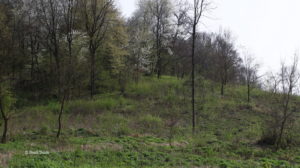General description of project area
Name of the project area: Felsőtárkányi Miklós-völgy and Ostoros-völgy
Surface area (ha): 52.560
EU protection status SPA: NATURA 2000 Code HUBN10003
EU protection status SCI: NATURA 2000 Code HUBN20008
Other protection status according to national or regional legislation: National Park
The main uses of the project site: The main land uses: Nature conservation 100%
The ownership status: Sate property 37% private 63%

Scientific description of project area
The project area is located in the South-west Bükk minor landscape mainly on shale covered karst in the eastern fringe of the Tárkányi-medence (Tárkányi Basin) (Miklós-völgy and Ostoros-völgy (valleys), where we find a mass of steppe woodland species, which are in contact with species of the colline thermophilous oak forests. Streams of Miklós-völgy and Ostoros-völgy are running into the Tárkánystream. Miklós-völgy is dominated by 91M0 Pannonian-Balkanic turkey oak –sessile oak forests (24%) and 91G0*Pannonic woods with Quercus petraea and Carpinus betulus (9%) while Ostoros-völgy which is dominated by 91I0 * Euro-Siberian steppic woods with Quercus spp. (22%). Besides there are 40A0 * Subcontinental peri-Pannonic scrub (15%), 6250* Pannonic loess steppic grasslands (15%) and 6240* Sub-Pannonic steppic grasslands on the project area. In the same time the invasive Robinia pseudoacacia is occupying more than 3% of the area. The most important plant species are Phlomis tuberosa, Potentilla alba and Stipa tirsa, of the entire project area. In Miklós-völgy Galanthus nivalis, while in Ostoros-völgy Echium russicum, Thlaspi jankae and Pulsatilla grandis are the additional most important plant species.
- Priority animals of the area:
- Mammals: Dryomys nitedula, Glis glis
- Birds: Dryocopus martius, Dendrocopos leucotos, Ficedula albicollis, and Picus canus
- Beetles: Cerambyx cerdo, and Lucanus cervus Butterflies: Dioszeghyana schmidtii
Importance of the project area for biodiversity and/or for the conservation of the species /habitat types targeted at regional, national and EU level
In Miklós-völgy the 91G0*, and 91M0 oak forest stands while in Ostoros-völgy 91I0 * Euro-Siberian steppic woods with Quercus spp. are very important habitats of several strictly protected species listed in the scientific description part, hence a proper nature conservation management of the oak forests is required. Especially the 91I0*Euro-Siberian steppic woods with Quercus spp is nationally the last remnants therefore it is utmost important to protect it. However, the largest part of the area is privately owned today, to be able to do a proper nature conservation management of this area the private forest part must be purchased and the invasive species must be eliminated in the area. The stand structure, composition, mixture rate and dead wood of Pannonic woods with Quercus petraea and Carpinus betulus, Euro-Siberian steppic woods with Quercus spp. and Pannonian-Balkanic turkey oak – sessile oak forests of the area can be improved by the proper nature conservation management. These forests and the presence of Sub-Pannonic steppic grasslands,Subcontinental peri-Pannonic scrub and Pannonic loess steppic grasslands makes the area important in biodiversity and EU point of view. The naturalness and biological diversity of the area can be relatively quickly improved by a proper nature conservation management.
Flagship species in project area
Adonis vernalis, Prunus tenella, Eriogaster catax